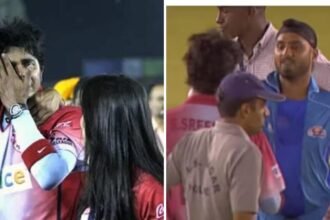The reality, though, was that FAA had not played well in the year’s previous majors. He won the first two sets of his second-round match with Alejandro Davidovich Fokina at the Australian Open, only to go down in five. At Roland Garros, he allowed another two-set lead slip away, this time to Matteo Arnaldi. And at Wimbledon, on a surface that could not be more suited to his monstrous serves and forehands, he bowed out in four sets in round two to No. 125 Jan Lennard Struff.
Just why Auger-Aliassime faded so completely, for so long, is something of a mystery. Sure, injuries played a role. So did periodic losses of confidence. But basic maturity may be the most overlooked essential in a young player’s development. One minute, Auger-Aliassime was just this nice, polite kid from Quebec, and the next he was the Next Big Thing in tennis, walking the red carpet with the stars at New York’s Met Gala (to his credit, though, he wore a simple tuxedo). Such transitions can be confusing, and distracting.
“Throughout the years I still had good moments,” Auger-Aliassime said. “I was around 25, 30 in the world. It was not like I was losing all the time. But for sure there were months where I was thinking, ‘Okay, what’s my approach tactically with my game?’ Once I got the physical (injuries) things kind of sorted out, it was like, ‘Okay, now I’m healthy again. How am I playing?’”
The answer to that on Labor Day here in New York was, “pretty darned good.” Good enough to punch through to a semifinal again, perhaps even good enough to go even further.






